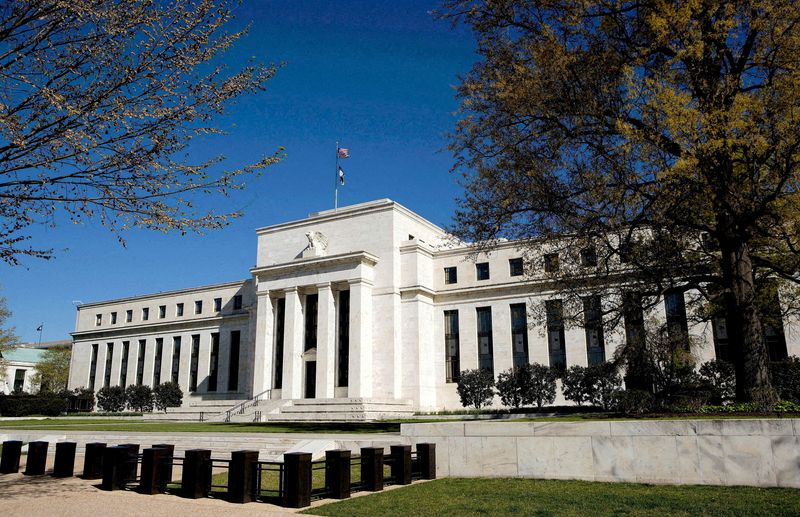By Michael S. Derby
NEW YORK (Reuters) – U.S. Federal Reserve losses crossed the $200 billion level this week, in response to information launched on Thursday by the central financial institution.
The Fed reported that as of Wednesday, the extent of its so-called earnings remittance to the Treasury Division stood at damaging $201.2 billion. The quantity represents a paper loss that central financial institution officers have famous doesn’t impair their means to conduct financial coverage.
The damaging quantity is captured in an accounting measure the Fed calls a deferred asset. The Fed should cowl this shortfall earlier than it will probably start returning extra earnings to the Treasury.
Fed losses stream from the high-interest charge financial coverage path it had been pursuing to convey down inflation.
The Fed pays banks and cash funds to park money on the central financial institution to maintain short-term rates of interest on the desired ranges. The Fed tilted into loss two years in the past and confronted document crimson ink in 2023, as the cash it has needed to pay out to handle charges has outstripped the cash it makes from the curiosity earned from bonds it holds.
The Fed funds itself via companies it supplies to the banking system and through the curiosity on bonds it owns. It returns any earnings to the Treasury Division as required by regulation, and for a few years, the central financial institution has handed again substantial sums: St. Louis Fed analysis mentioned that between 2011 and 2021 the Fed returned practically $1 trillion to the Treasury.
The loss-making scenario is tied to an aggressive cycle of charge rises finished between March 2022 and July 2023 that noticed the central financial institution’s rate of interest goal fly up from close to zero ranges to between 5.25% and 5.5%.
The Fed mentioned in March that its paper loss final 12 months totaled $114.3 billion. It paid out $176.8 billion to banks and $104.3 billion through its reverse repo facility, whereas incomes $163.8 billion through curiosity on bonds on its steadiness sheet.
With the Fed’s current half proportion level charge reduce and the prospect of extra easing, it should doubtless see a slower tempo of losses rising ahead, as it should face a smaller degree of curiosity bills to take care of its charge goal. Earlier than the Fed can return money to Treasury, nonetheless, it must successfully pay again the deferred asset, which might take years.
To date, the Fed has not confronted any political warmth for its monetary scenario, though that surprises some, together with former central bankers.
(Reporting by Michael S. Derby; Enhancing by Dan Burns and Andrea Ricci)


